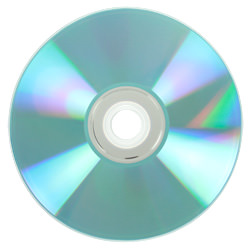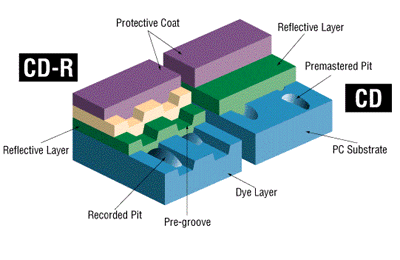Understanding the Basics of a CD-R
Since their introduction in the early 1980’s, CDs have been a smash hit with consumers and retailers globally. Optical media revolutionized the way we handle data storage and access. It is now possible to easily and cheaply produce, burn, and print discs at home or through established duplication houses. Despite their decline, there are still opportunities for CDs to shine, from musicians, small businesses, lawyers, healthcare, and upstart software developers.
You probably have a few questions like how does a CD work? What does CD-R mean? We’ll answer these below!
What is a CD?

A CD is a Compact Disc, a plastic optical disc with a metalized surface that is used for digital storage. These became the go-to storage option for data starting with their introduction in the early 1980’s but have since been largely replaced by USB drives and cloud storage. They still are a functional option in specific markets that require offline, hard storage.
CD recorders, writers, and burners are all different names for the same machine, which writes information onto a CD.
A CD-R (a readable disc that you can only burn once) contains three layers of a standard compact disc (polycarbonate base layer, aluminum coating, and clear acrylic protective coat) plus a fourth layer composed of organic dye for recording.
Some manufacturers have allegedly added extra coloring to the dyes of their discs so customers can’t distinguish the particular dye, which often disguises poor quality.
How does a CD work?
Optical media functions by using the layered surface of a disc to read the “lands and pits” that are burned via laser into the surface.
The plastic disc provides a platform for layers of metallic coating. A laser burns ridges and pits into the surface of the layers, which when read back via laser forms binary data (the ones and zeroes of code that form readable information). The metallic, shiny surface ensures that the laser can read the disc.
What does CD-R mean?
The definition of a CD-R is: Compact Disc Recordable, meaning that it can only be written once and read any number of times after. They were originally called CD WO (Compact Disc Write Once) but later changed to CD-R when first published in 1988 by Phillips and Sony.
CD-R, if they’re made of good quality materials, can last a decade before data degradation occurs. Failure of a CD-R can be due to dye degradation, damage, or in cases of rewritable discs, the recording layer could fail. Certain dyes and colors last longer than others (Gold is the best as it is inert and does not oxidize like silver). Some experts believe that gold CD-R can last as long as 100 years.

CD-R are like a basic CD; they don’t come with additional features. CD-R are favorite types of discs for businesses to distribute because clients and recipients cannot alter data stored there, making it very useful for promotional, health, or legal purposes.
How much and what type of information can I store on a CD-R?
The maximum storage capacity of a CD-R is 700MB of data, or 80 minutes of digital audio. CD-R can work with both data and audio, so feel free to mix and match. However, some audio CD players will not recognize discs that contain mixed media.

